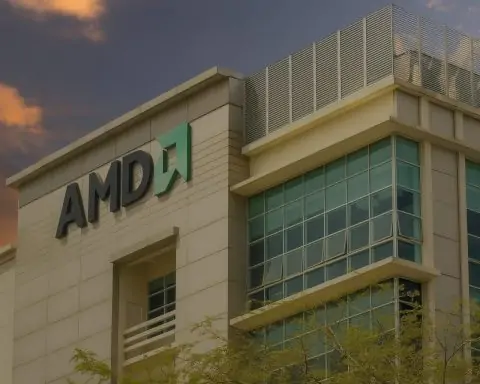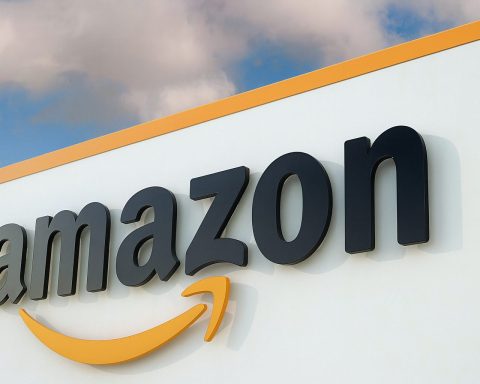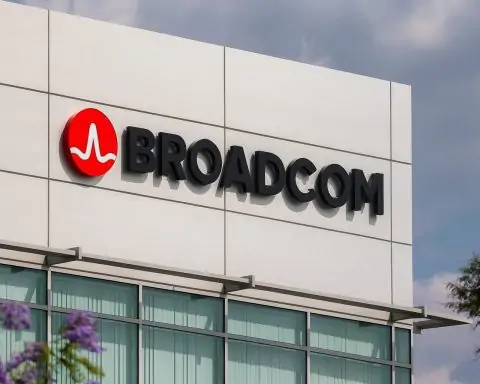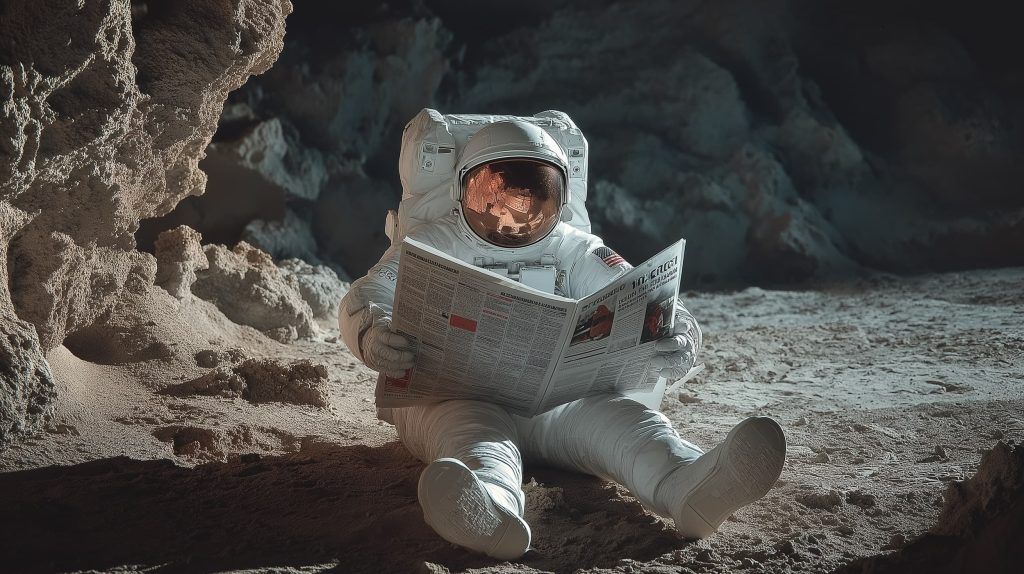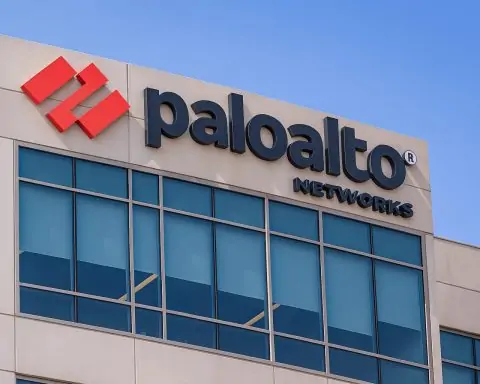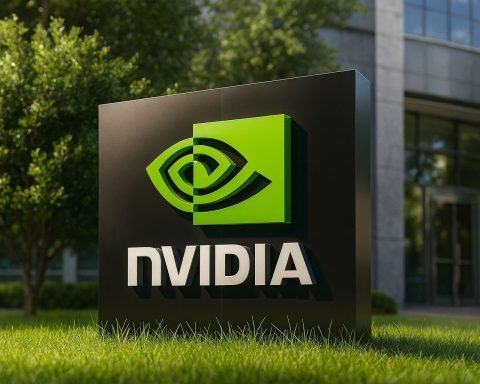Consumer Electronics & Gadgets
- Samsung’s Latest Foldables: Samsung’s Galaxy Z Fold7 (unveiled July 9) hit general availability on July 25, pushing foldable phone design further. The Fold7 is Samsung’s thinnest and lightest foldable yet and the first in the series with a 200 MP camera, setting a new bar for foldable smartphone specs [1] [2]. Early reviews praise the refinements – one called it “foldable phone nirvana (for a price),” highlighting its improved build and display (Samsung also launched a companion Galaxy Z Flip7 flip-phone) [3].
- Surprise Sony Camera Release: In an unexpected move, Sony revived its RX1R line after nearly a decade. The company quietly launched the RX1R III compact full-frame camera, nine years after the last model. Photography enthusiasts were stunned by the timing – but the new RX1R III packs a modern 61 MP sensor and processor borrowed from Sony’s flagship cameras, bringing the aging series up to speed [4]. As one tech writer quipped, “sorry you had to wait almost 10 years, RX1 fans, but better late than never” [5], celebrating the return of this high-end compact camera.
Computing & Chips
- AMD’s 96-Core Beast: AMD has unleashed its most powerful desktop processor ever. On July 23 it launched the Ryzen Threadripper Pro 9000 WX-series CPUs, topping out at a staggering 96 Zen 5 cores on a single chip [6]. Aimed at workstations and creators, the flagship 96-core model carries an eye-watering $11,699 price tag [7]. Alongside the CPU, AMD also rolled out a new professional GPU (the Radeon Pro R9700), rounding out its high-end “Shimada Peak” platform. The launch underscores AMD’s aggressive push in the high-performance computing segment, as it one-ups rival Intel in core count and performance on ultra-high-end chips.
- Record-Breaking Storage: The data storage industry hit new milestones in capacity. Seagate began shipping 30 TB hard disk drives – the largest capacity HDDs ever sold to the public – using cutting-edge HAMR (heat-assisted magnetic recording) tech to cram 3 TB per platter [8]. Even more astonishing, Kioxia (formerly Toshiba) announced a 245 TB solid-state drive in a standard 2.5-inch form factor [9]. This enterprise SSD stacks 32 flash dies and targets massive data workloads, offering unprecedented storage density. Both breakthroughs illustrate how “bigger is better” in storage – Seagate is already planning 32 TB and 36 TB drives next, and Kioxia’s 245 TB SSD is poised to support huge data lakes and cloud AI centers [10] [11].
Software & Operating Systems
- Google Merging ChromeOS & Android: After years of speculation, Google has confirmed it plans to combine ChromeOS and Android “into a single platform.” Sameer Samat, Google’s VP of Android ecosystem, said in an interview that the company is finally unifying its laptop and mobile operating systems [12]. Historically, ChromeOS (which powers Chromebooks) and Android (for phones/tablets) have been separate, with only limited crossover. Google’s statement hints at a future where laptops and phones share one OS – a significant shift aiming to streamline app ecosystems and user experience across devices [13]. Industry watchers note this convergence could coincide with new Google hardware (Samat mused about Google’s renewed interest in laptops), potentially with a next-gen Pixelbook to showcase the merged OS [14].
- Other Software Updates: A flurry of smaller updates is improving everyday tech tools. Microsoft acknowledged and fixed a nagging Windows 11 bug that had been incorrectly flagging a firewall issue [15], after users complained a prior patch didn’t fully solve it. Gmail introduced a new “Manage Subscriptions” feature to help users easily unsubscribe from marketing emails cluttering their inbox [16] – a welcome quality-of-life change for anyone battling spam. And Apple’s latest iOS 26 developer beta finally removes a quirky copy-paste limitation in iMessage that had annoyed users for years [17], allowing more seamless copying of text between messages. These incremental tweaks, while not headline-grabbing on their own, collectively make everyday software a bit more secure and convenient.
Cybersecurity & Data Privacy
- Microsoft SharePoint Hack Alert: A serious zero-day exploit hit Microsoft’s enterprise software, prompting urgent warnings from the company. Microsoft revealed “active attacks” on on-premises SharePoint servers used by businesses and government agencies, and urged administrators to apply security patches immediately [18]. Unidentified hackers had leveraged a previously unknown flaw to breach multiple organizations’ SharePoint document-sharing servers over the prior few days [19]. The FBI and U.S. cybersecurity officials are involved, as tens of thousands of servers were at risk from this spoofing vulnerability [20]. Notably, SharePoint Online (the cloud-based service in Microsoft 365) wasn’t affected – the attack targeted legacy self-hosted servers. Security experts called it a classic “zero-day” scenario, and Microsoft is investigating reports that a state-backed Chinese group may have been behind the intrusions [21].
- Dell Data Breach & “Fake” Data Leak: PC maker Dell confirmed a cyberattack on one of its internal systems – and an extortion crew has dumped a trove of stolen files. The breach, attributed to a new group calling itself “World Leaks,” compromised Dell’s isolated Customer Solution Center (a demo and testing environment) earlier in July [22] [23]. The attackers exfiltrated about 1.3 TB of data – over 416,000 files ranging from configuration scripts to internal system backups – and published them on their leak site [24]. Dell, however, downplayed the incident, asserting that no sensitive customer or partner information was exposed. The company said the affected demo systems used only “synthetic (fake) data” and public test datasets for product showcases [25]. In a statement, Dell stressed that protecting customers is top priority and that its production networks remained secure [26]. The incident highlights an emerging trend: the culprits didn’t deploy ransomware, but focused on data theft and extortion – a tactic on the rise as ransomware defenses improve.
- Dating App Data Leak (Tea App): A buzzy new social app called Tea, which lets women anonymously review and swap “dating stories” about men, suffered a concerning privacy breach. Early on July 25, Tea’s team discovered unauthorized access to an old database, and by midday it emerged that roughly 72,000 private images from the app had been leaked online [27] [28]. Many of the exposed files were sensitive – about 13,000 were user selfies or photos of government IDs used for account verification [29]. The rest included in-app posts, comments, and messages that were meant to be private. Tea’s spokesperson confirmed the breach and said the data came from a “legacy storage system” dating back over two years [30]. In fact, reporters found the stolen cache posted on the anonymous forum 4chan [31]. The company says it has engaged third-party cybersecurity experts and sees no evidence newer data was affected [32] [33]. The incident is raising alarms because Tea had just exploded in popularity – topping the U.S. App Store with millions of sign-ups this week – meaning a trove of user content was suddenly exposed. It’s a stark reminder that even hot new apps can harbor old security flaws, underscoring the importance of robust data protection especially when apps go viral.
Telecommunications & Infrastructure
- Satellite-to-Cell Service Launch: T-Mobile and SpaceX achieved a major first in telecom integration, officially launching “T‑Satellite” service that lets ordinary mobile phones connect to satellites. After months of beta tests, T-Mobile’s satellite texting service (powered by SpaceX’s Starlink constellation) went live on July 23 [34]. Now, when users are off the grid – far outside cell tower coverage – their phones can link to one of >650 Starlink low-Earth-orbit satellites to send and receive basic text messages [35]. Remarkably, this works with existing phones: T-Mobile says 600+ smartphone models are compatible (including modern iPhones), with no special satellite phone needed [36]. Initially the service supports SMS and iMessage texting (no data or voice yet) and is free on T-Mobile’s top plans (or ~$10/month add-on for others) [37]. Subscribers from other carriers can even roam onto T-Mobile’s satellites for a fee. This “direct-to-cell” satellite connectivity, a first-of-its-kind offering, aims to eliminate cellular dead zones – an idea once limited to sci-fi. It’s limited (texts only, and you must be outdoors with a clear sky), but marks a significant step toward universal coverage.
- Broadband Policy U-Turn: U.S. telecom regulators are dramatically dialing back broadband speed goals in a controversial policy shift. The Federal Communications Commission (FCC), now under a new administration, announced plans to scrap the national 1 Gbps/500 Mbps broadband target that had been set in 2024 [38]. The gigabit-speed goal (meant to encourage fiber deployment) is being abandoned on the argument that it’s unrealistic and unfair to technologies like satellite and fixed wireless, which currently can’t reach those speeds [39]. “Assuming a long-term goal of 1000×500 Mbps may be unreasonably prejudicial…[it] risks skewing the market by unnecessarily…picking winners and losers,” the FCC’s notice stated [40]. In the same proposal, the Commission also wants to stop evaluating broadband affordability and adoption as part of its annual review, calling those factors “extraneous” to its core mandate [41]. The move, scheduled for an August 7 vote, would reverse many pro-consumer measures from the prior FCC. Critics worry this rollback will ease pressure on ISPs to improve service, while proponents (including FCC Chairman Brendan Carr) say it simply returns to a “technologically neutral” stance and the letter of the law [42] [43]. Expect a heated debate in telecom circles over how this change might affect America’s digital divide.
Biotech & Health Tech
- Gene Therapy Milestone in Japan: A groundbreaking genetic therapy for a rare disease just earned approval in Japan. Pittsburgh-based Krystal Biotech announced that Japan’s health authority (MHLW) approved VYJUVEK, a topical gene therapy for dystrophic epidermolysis bullosa (DEB) [44]. DEB is a debilitating genetic skin condition (often called “butterfly child” disease) with limited treatment options. VYJUVEK (already approved in the US and EU) delivers functional collagen genes to a patient’s skin to address the disease’s root cause. Not only is this the first therapy of its kind for DEB, it’s the first-ever genetic medicine approved in Japan for any disease [45]. The approval was based on positive clinical trial data showing improved wound healing and safety [46]. While Krystal Biotech still needs to secure reimbursement in Japan, it expects to launch VYJUVEK there by the end of 2025 [47]. The decision is being hailed as a win for rare disease patients and a sign that Japan is embracing cutting-edge biotech innovations.
- FDA Green-Lights High-Tech Asthma Device: The U.S. FDA granted “Breakthrough Device” designation to a novel medical device that treats asthma in an entirely new way. The device, developed by China’s Cryofocus Medtech, is a cryoablation system for asthma – essentially, it uses extreme cold to modify nerves or airway tissues to reduce asthma symptoms. The FDA’s breakthrough label (awarded on July 24) will expedite the device’s development and review process [48]. This marks the first time a cryotherapy-based asthma treatment has earned such status. If trials prove successful, the technology could offer an alternative for severe asthma patients who don’t respond well to drugs, by physically altering the airway response that triggers attacks. Industry analysts note this as part of a broader trend of medical tech innovation coming from global startups and getting fast-tracked in the US.
Space & Aerospace
- NASA’s New Space Weather Mission: NASA launched a pair of scientific satellites that will probe Earth’s magnetic shield like never before. On July 24, a SpaceX Falcon 9 rocket from California lofted TRACERS, a twin-spacecraft mission to study how the Sun’s eruptions interact with Earth’s magnetosphere [49]. The two TRACERS satellites will fly just 10 seconds apart through Earth’s northern magnetic cusp region, collectively measuring the process of magnetic reconnection – when solar wind particles crash into our magnetic field and unleash energy. Over its one-year primary mission, TRACERS will take an unprecedented 3,000 measurements of space plasma dynamics to better understand space weather and its impact on technologies like GPS and power grids [50] [51]. “The TRACERS satellites will move us forward in decoding space weather and further our understanding of the connection between Earth and the Sun,” said acting NASA Administrator Sean Duffy, praising the mission as a boost to American space science leadership [52]. Along for the ride were three small auxiliary satellites testing new tech for NASA, all of which were successfully deployed as well [53].
- Europe Launches Climate Satellites: Europe is also celebrating a successful launch – on July 25, an Arianespace Vega-C rocket blasted off from French Guiana carrying five Earth-observing satellites into orbit [54] [55]. Among them was MicroCarb, a 180 kg French satellite designed to precisely map global carbon dioxide sources and sinks, helping scientists track greenhouse gas emissions with 1 ppm accuracy [56]. Riding with it were four CO3D satellites (built by Airbus for the French space agency CNES) that will work in tandem to produce high-resolution 3D maps of Earth’s land surfaces [57]. Each CO3D satellite will use a novel optical sensor to capture images at 50 cm resolution in multiple color bands, allowing detailed terrain models after ground processing [58]. The Vega-C launch (mission VV27) went off right on schedule at 10:03 pm ET and successfully deployed all five satellites into their planned orbits [59]. This is a notable rebound for Vega-C after a previous failure; the mission’s success is a relief for Europe’s space program and a boon to climate researchers awaiting the new data.
- Amazon’s Satellite Ambitions: In the private sector, Amazon is investing heavily to catch up in the satellite internet race. The company confirmed a $139.5 million investment to build a state-of-the-art satellite processing facility at NASA’s Kennedy Space Center in Florida [60]. The 100,000 square-foot facility will be dedicated to Amazon’s Project Kuiper – a planned mega-constellation of 3,236 broadband satellites intended to compete with SpaceX’s Starlink. The site will enable Amazon to integrate and fuel over 100 Kuiper satellites per month, supporting a rapid launch cadence across multiple rockets [61]. With launches scheduled on vehicles from ULA, Blue Origin, and SpaceX, Amazon is alleviating a bottleneck on the busy Space Coast by creating its own payload prep capacity [62]. This move underscores Amazon’s commitment to get Kuiper satellites in orbit quickly; the first prototypes launched in late 2023, and Amazon aims to have half the constellation up by 2026 to meet FCC deadlines. It’s also a significant investment in Florida’s Space Coast, potentially creating hundreds of jobs as Amazon tries to catch SpaceX’s head start in space-based internet.
- Global Space Cooperation: Amid these tech advances, space policy is evolving too. The U.S. Space Force released its first-ever International Partnership Strategy, laying out a vision for deepening collaboration with allied nations in military and commercial space endeavors [63]. Emphasizing that “spacepower is the ultimate team sport,” the strategy calls for empowering allies as “combat multipliers,” greater sharing of information, and integrating coalition partners into everything from satellite design to joint operations [64]. In a similar vein, U.S. aerospace firm Collins Aerospace announced a major expansion of its R&D facilities in Texas (with state support) to drive innovation in defense and space tech [65], and Turkey’s space agency marked one year of its first domestically-built comms satellite in orbit by partnering with Azerbaijan to co-develop a new satellite, an effort to boost regional space industry talent [66]. All these developments point to a rapidly globalizing space sector – with both governments and companies teaming up across borders to push the frontiers of technology and exploration.
Sources: Official corporate announcements, government releases, and reputable tech media were used in compiling this report. For more details, see NASA [67] [68], Space Insider [69] [70], Wired [71] [72], Reuters [73] [74], PCMag/CNET [75] [76], Business Insider [77] [78], and other sources as cited above.
References
1. news.samsung.com, 2. news.samsung.com, 3. news.samsung.com, 4. www.wired.com, 5. www.wired.com, 6. graphics-unleashed.com, 7. graphics-unleashed.com, 8. www.networkworld.com, 9. www.networkworld.com, 10. www.networkworld.com, 11. www.networkworld.com, 12. www.wired.com, 13. www.wired.com, 14. www.wired.com, 15. graphics-unleashed.com, 16. graphics-unleashed.com, 17. graphics-unleashed.com, 18. www.reuters.com, 19. www.reuters.com, 20. www.reuters.com, 21. www.reuters.com, 22. www.esecurityplanet.com, 23. www.esecurityplanet.com, 24. www.esecurityplanet.com, 25. www.esecurityplanet.com, 26. www.esecurityplanet.com, 27. www.businessinsider.com, 28. www.businessinsider.com, 29. www.businessinsider.com, 30. www.businessinsider.com, 31. www.businessinsider.com, 32. www.businessinsider.com, 33. www.businessinsider.com, 34. www.macrumors.com, 35. www.macrumors.com, 36. www.macrumors.com, 37. www.macrumors.com, 38. broadbandbreakfast.com, 39. broadbandbreakfast.com, 40. broadbandbreakfast.com, 41. broadbandbreakfast.com, 42. broadbandbreakfast.com, 43. broadbandbreakfast.com, 44. www.rttnews.com, 45. www.streetinsider.com, 46. www.rttnews.com, 47. www.rttnews.com, 48. www.bioworld.com, 49. www.nasa.gov, 50. www.nasa.gov, 51. www.nasa.gov, 52. www.nasa.gov, 53. www.nasa.gov, 54. www.space.com, 55. www.space.com, 56. www.space.com, 57. www.space.com, 58. www.space.com, 59. www.space.com, 60. spaceinsider.tech, 61. spaceinsider.tech, 62. spaceinsider.tech, 63. spaceinsider.tech, 64. spaceinsider.tech, 65. spaceinsider.tech, 66. spaceinsider.tech, 67. www.nasa.gov, 68. www.nasa.gov, 69. spaceinsider.tech, 70. spaceinsider.tech, 71. www.wired.com, 72. www.wired.com, 73. www.reuters.com, 74. www.reuters.com, 75. graphics-unleashed.com, 76. graphics-unleashed.com, 77. www.businessinsider.com, 78. www.businessinsider.com

